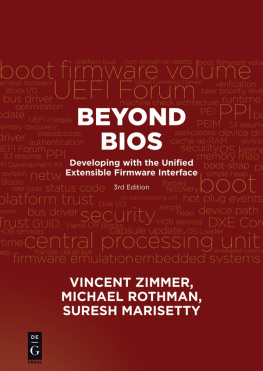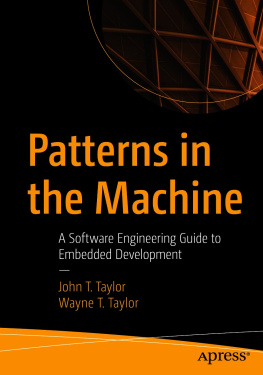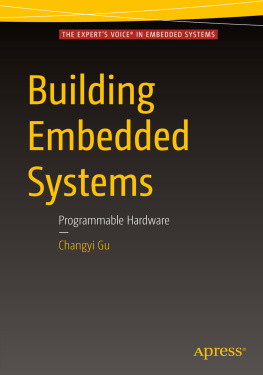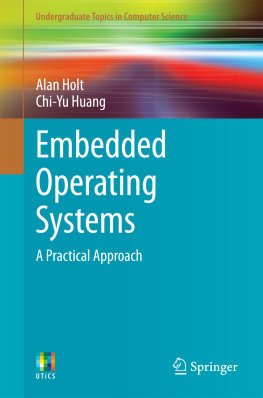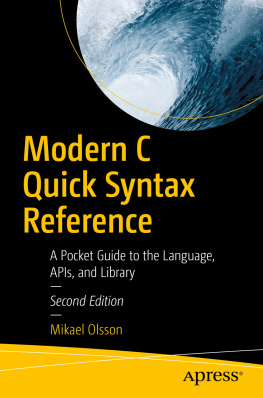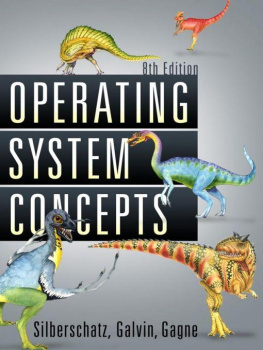Contents
Guide

Vincent Zimmer, Suresh Marisetty, Michael Rothman
Beyond BIOS
Developing with the Unified Extensible Firmware Interface
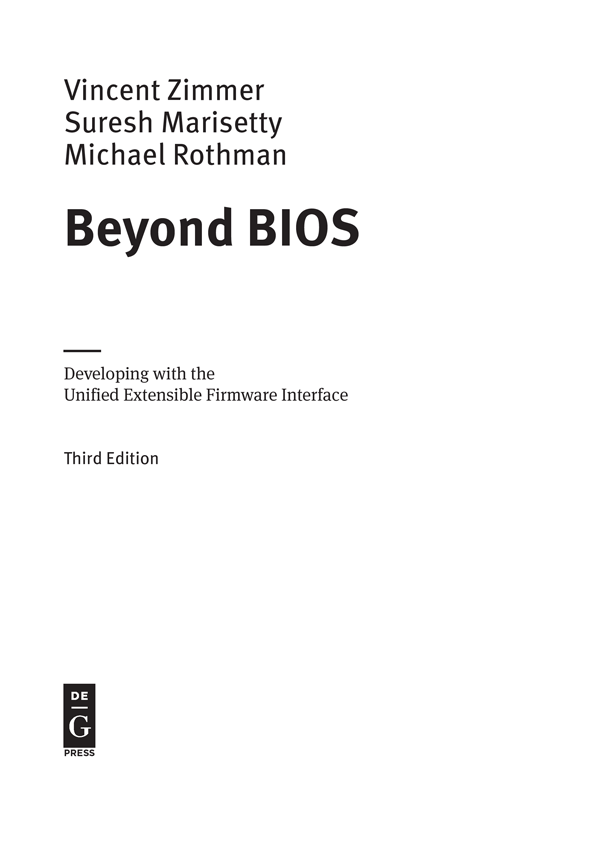
ISBN 978-1-5015-1478-4
e-ISBN (PDF) 978-1-5015-0569-0
e-ISBN (EPUB) 978-1-5015-0583-6
Library of Congress Cataloging-in-Publication Data
A CIP catalog record for this book has been applied for at the Library of Congress.
Bibliographic information published by the Deutsche Nationalbibliothek
The Deutsche Nationalbibliothek lists this publication in the Deutsche Nationalbibliografie; detailed bibliographic data are available on the Internet at http://dnb.dnb.de.
2017 Walter de Gruyter Inc., Boston/Berlin
www.degruyter.com
Acknowledgements
The authors recognize the efforts and contribution of the two men and a dog: Mark Doran, Ken Reneris, and Andrew Fish, who conceived and hatched EFI.
The authors recognize and thank the other original Framework (Tiano) architects Andrew Fish, Bob Hale, Mike Kinney, Barnes Cooper, Will Stevens, Krithivas, ER Uber, Mahesh Natu, Rahul Khanna, Jim Ewertz, Kirk Brannock, and others whose names are lost to time and the teams intrepid leader, Mark Doran. We thank Isaac Oram, John Lambino, and the entire Tiano Architecture Team (TAT) team for fleshing out and enhancing the architecture. Thank you to the Tiano engineering team for their patience while implementing the first versions and to our internal and external customers. The innovation in this book is from these fertile brains. Also, many of this team will recall over ten years of design discussions at R&R.
We thank our managers, past and present, for giving us the chance and the time to work on the architecture and this book including Doug Fisher, Richard Wirt, Stu Goossen, Mike Richmond, Kah Loh, Jeff Griffen, Michael Greene, Ju Lu, and Ron Story.
We acknowledge the ever-supportive marketing team: Shala, Laurie, Harry, Fadi, Elmer, and Bailey.
No Intel book is published without peer review. Wed like to thank all the reviewers for identifying errors and for providing valuable insight and encouragement along the way. Without their help, this book would not have been a success. From Intel, these individuals participated, at one time or another, in the review of this project: Rob Branch, Mallik Bulusu, Brad Davis, Michael Krau, John Suresh Kumar, Matthew Parrish, Mike Richmond, Lee Rosenbaum, and Sudhakar Otturu. Other reviewers included Cameron Esfahani from Apple Computer Corporation, Todd Greene from QLogic Corporation, Penny Huang from Micro-Star International Company, Limited, Jimmy Hwang from American Megatrends, Incorporated, and Dong Wei from Hewlett-Packard Development Company, L.P.
A book like this describes the efforts of a large number of talented individuals. The authors would like to thank all of them for their efforts and support. Please accept our apologies if we missed you. We can only say that space is as limited here as it is in ROMs and time as limited here as it is in schedules. Well try to fix it in the next release.
Preface
There are two mistakes one can make on the road to truthnot going all the way, and not starting.
Buddha
This is a book about a new way to solve an old set of problems that are persistent as well as fundamental, but not always well understood: How should you boot a computer? What sits at the reset vector? What can the operating system count on when it is loaded and initially receives control? What should the internal structures be between these two endpoints? How can the same basic structure work for handhelds and megaservers? How do we convince ourselves todays design will work 10 or 20 years from now? How much will it cost to switch? How much will it cost steady state? What comes after BIOS (Basic Input/ Output System)?
Beyond BIOS is a book about a largely invisible subject. The general user, if they have any view of BIOS at all, tends to view it as ten unnecessary seconds on the way to booting the operating system or as setup. The community that knows and uses the BIOS has tended to view it as an uncontrolled place of kludge, myth, bug, and legend. The very small community of BIOS developers has viewed their code not only as highly mutable and embodying much of the compatibility that has made the PC and its offspring so successful, but also as their livelihood.
This is a book that is about what comes after BIOS, which we call the Unified Extensible Firmware Interface (UEFI) and Platform Initialization (PI). In doing so, it must also be a book at least partly about what a BIOS or its replacement is called upon to do. It is not a cookbook on how to port the PI from platform to platform. It is not a rehash of the specifications. Instead, it tries to fit in the middle ground between specifications and cookbook. It tries to focus on the concepts and constructs that are cross-platform and implied, if not stated, by the architecture. It is supposed to help to get to some of the why behind the specs and make the porting work make some sense.
This book is a child of its time. Both the UEFI and the PI are under the control of the UEFI Forum, an industry-wide group in which you are encouraged to participate. Beyond BIOS mainly focuses on the current state of the PI and UEFI since the 2005 formation of the Forum, its working groups, and its sub-teams. This is not to say that this is only a history book or a simple summary of the standard. Instead, we believe it remains valuable as an introduction to the newer versions of the specifications no matter who has the pen.
If you find this book to be useful, then we encourage you to obtain Harnessing the UEFI Shell: Moving the Platform beyond DOS by Rothman, Zimmer and Lewis, De|G Press, February 2017.
The Chapters
provides a description of the evolution.
The rest of the book is organized into two major sections. The earlier chapters present an introduction to UEFI, and the later chapters cover the Platform Initialization.
provides an overview of the basic UEFI architecture. This is a must-read for anyone seeking an understanding of the Unified Extensible Firmware Interface (UEFI).
describes the UEFI driver model. This is important for vendors writing device drivers for output devices (such as video), input devices (such as keyboards or mice), networking adapters, and block devices. These drivers can be stored in the host-bus adapter, the platform ROM, or loaded from the UEFI system partition.
describes of series of commonly used UEFI protocols. This chapter complements the earlier two chapters and includes data on additional boot services application interfaces.
includes information on the UEFI runtime operational environment. This chapter is important for operating system vendors who need to interact with the platform during the operating system execution.
describes UEFI input and output console services. This chapter provides details on the particular capabilities, interfaces, and relationships of the console services.
includes a list of different platforms and the Platform Initialization-based implementations. This chapter demonstrates the flexibility of the Platform Initialization by mapping the infrastructure to widely varying hardware platforms.
describes the basics of the Platform Initialization Driver Execution Environment (DXE). This is important to read for anyone working on the phase of execution prior to UEFI service availability but after early pre-EFI initialization (PEI).

